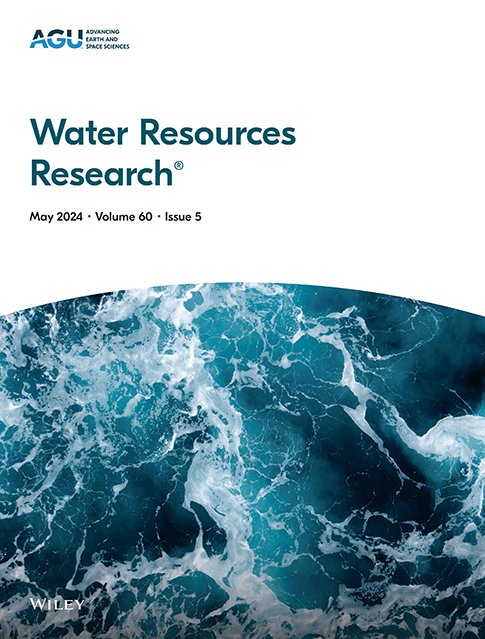Streamflow Monitoring at High Temporal Resolution Based on Non-Contact Instruments and Manually Surveyed Bathymetry in a River Prone to Bathymetric Shifts
IF 4.6
1区 地球科学
Q2 ENVIRONMENTAL SCIENCES
引用次数: 0
Abstract
This study presents a proof of concept of a reliable methodology for monitoring streamflow in a dynamic river of the Alps prone to bathymetric changes using non-contact instruments. The method relies on water level and surface velocity radar monitoring, discharge measurements by Large-Scale Particle Image Velocimetry (LSPIV), and topographic surveys. A single proportional relation, stable under bathymetric changes, is established between maximum surface velocity (Vs,max) and bulk velocity (Umean) using LSPIV measurements. The location of the maximum surface velocity is also shown to be relatively stable under bathymetric changes. The Isovel model, a theoretical approach which requires minimal information (i.e., bathymetry, water level and bed roughness) is also used to assess its capacity to predict the Vs,max–Umean relation and the location of the maximum surface velocity. Such model could be useful for applying the method in the absence of LSPIV measurements in the future. The applicability of the method is finally tested over a 2.5-year data set. Discharge is calculated at a time step of 10 min by multiplying the bulk velocity and the wetted cross-sectional area. The results are compared to the specific discharge time series at the historical station located 2.5 km further upstream, which has a stage-discharge rating curve, to assess the credibility of the proposed method. Good agreement is generally observed when surface velocity is above 0.7 m/s, but accuracy decreases for lower velocities. A simplified uncertainty analysis estimates a 25% relative error on discharge calculated with the presented method.基于非接触式仪器和人工测量水深的高时间分辨率河流流量监测
本研究提出了一种可靠的方法的概念证明,该方法用于监测阿尔卑斯动态河流中易于使用非接触式仪器进行水深变化的水流。该方法依靠水位和地表速度雷达监测、大尺度粒子图像测速(LSPIV)测量流量以及地形测量。利用LSPIV测量,在最大表面速度(Vs,max)和体速度(Umean)之间建立了一个在水深变化下稳定的单一比例关系。在水深变化的情况下,最大地表速度的位置也相对稳定。Isovel模型是一种理论方法,它需要最少的信息(即水深、水位和河床粗糙度),也用于评估其预测v、max-Umean关系和最大表面速度位置的能力。该模型可用于在未来缺乏LSPIV测量的情况下应用该方法。最后通过2.5年的数据集测试了该方法的适用性。通过将体积速度与湿截面积相乘,以10分钟的时间步长计算出流量。结果与上游2.5 km历史站点的具体流量时间序列进行了比较,该站点具有阶段流量额定值曲线,以评估所提出方法的可信度。当表面速度高于0.7 m/s时,通常观察到良好的一致性,但较低的速度会降低精度。简化的不确定度分析估计,用该方法计算的流量相对误差为25%。
本文章由计算机程序翻译,如有差异,请以英文原文为准。
求助全文
约1分钟内获得全文
求助全文
来源期刊

Water Resources Research
环境科学-湖沼学
CiteScore
8.80
自引率
13.00%
发文量
599
审稿时长
3.5 months
期刊介绍:
Water Resources Research (WRR) is an interdisciplinary journal that focuses on hydrology and water resources. It publishes original research in the natural and social sciences of water. It emphasizes the role of water in the Earth system, including physical, chemical, biological, and ecological processes in water resources research and management, including social, policy, and public health implications. It encompasses observational, experimental, theoretical, analytical, numerical, and data-driven approaches that advance the science of water and its management. Submissions are evaluated for their novelty, accuracy, significance, and broader implications of the findings.
 求助内容:
求助内容: 应助结果提醒方式:
应助结果提醒方式:


